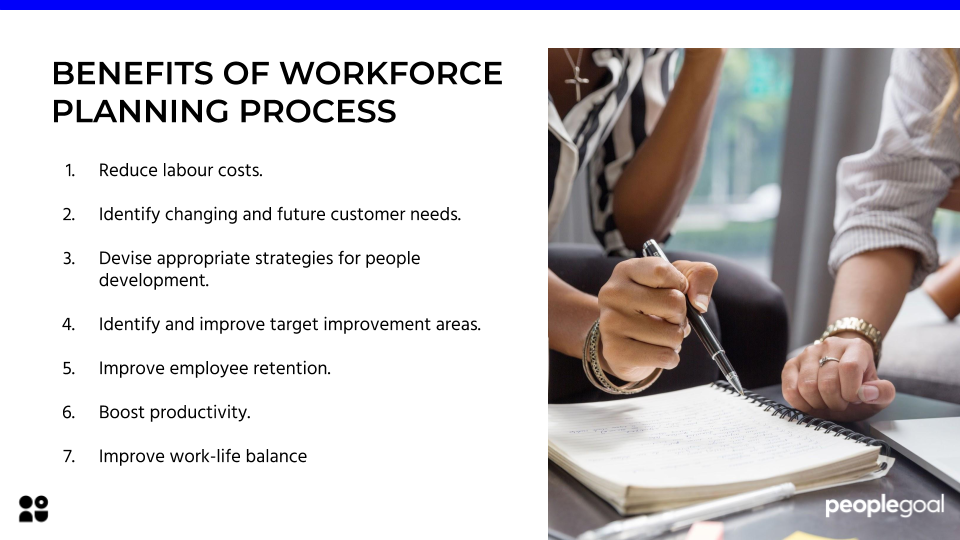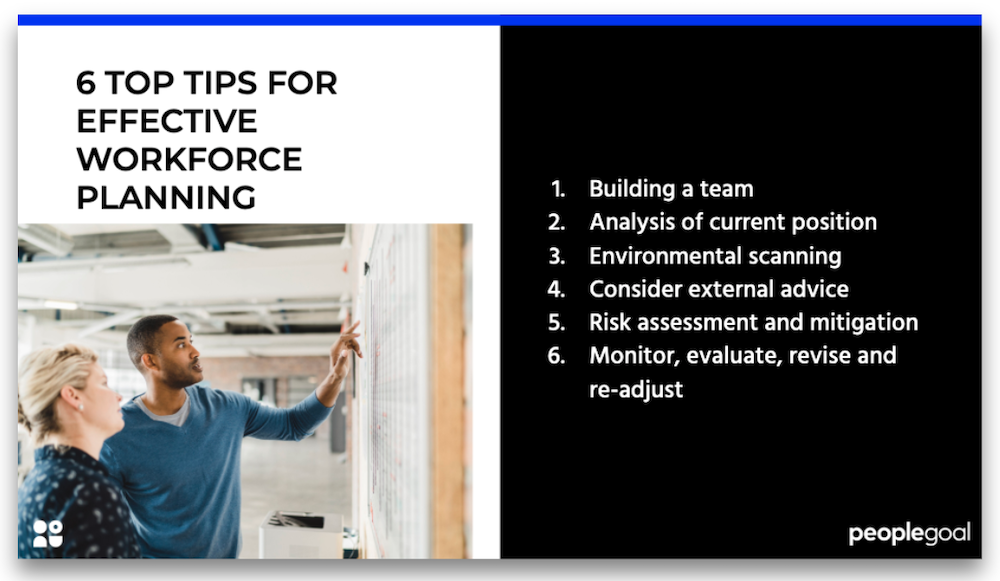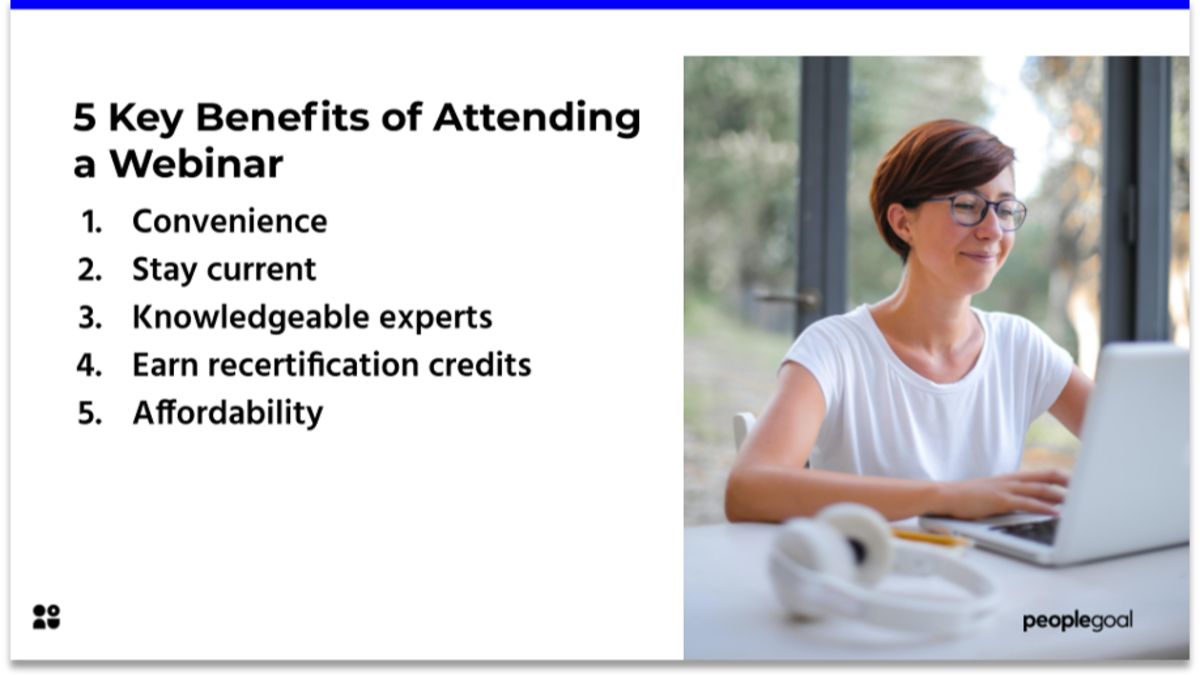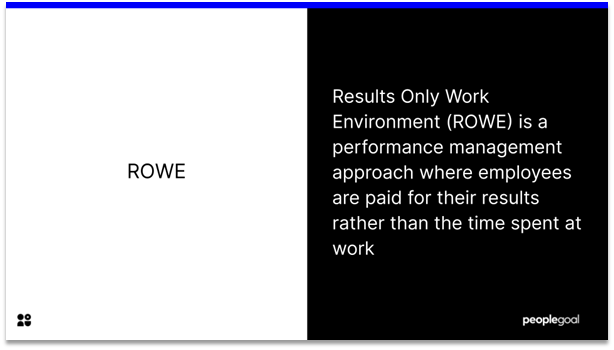What is Workforce Planning?
Workforce planning is a core business process. Workforce planninng aims to align evolving organizational needs with people strategy. It is a continual process due to the ever changing nature of organizational change. It may sound difficult, but it doesn’t have to be. Workforce planning can be changed and adapted in order to fit the maturity and size of your organization.
Workforce planning can be adapted to fit the size and maturity of an organization.
A bit more in-depth now. Workforce planning is the process of analyzing the current workforce, the future workforce needs, identifying the gap between present and future needs and devising solutions so that organizational change occurs effectively. It’s all about finding the perfect fit. It is about getting the right amount of people with the necessary number of skills. It is possible that bigger organizations will have dedivated workforce planning teams. Workforce planning is the systematic identification and analysis of organizational needs with respect to workforce size, experience, skills, knowledge.
Benefits of Workforce Planning
Why should you consider investing in workforce planning? Does it even help? Is it worth my time and the organization’s resources? Well, yes.
And here’s why:
Benefits of Workforce Planning Processes
- Reduce labour costs.
- Identify changing and future customer needs.
- Devise appropriate strategies for people development.
- Identify and improve target improvement areas.
- Improve employee retention.
- Boost productivity.
- Improve work-life balance.

This will follow into improve key HR practices:
- Organizational development
- Succession planning
- Improve employee engagement by improving employee work-life balance.
- Recruitment.
- Talent management
- Career planning
- Reward and recognition.
Top Tips for Effective Workforce Planning
Here are some of our top tips for effective workforce planning. Implement these into your workforce planning strategy and process.

Building a Team
As mentioned previously, some big organizations will have dedicated workforce planning teams. But what do you do if you can’t accommodate this? Here’s how you start. Establish a team. Remould their duties so that they carry on their predefined role and can also join the workforce planning team. Build your team wisely. Link corporate, finance, HR, people, business and workforce strategy. Establish communication channels. Engage stakeholders. Segment specific roles within the strategy. Distinguish between strategic workforce planing and operational workforce planning. Review existing data, identify gaps, set your targets.
Analysis of Current Position
What does your workforce currently look like? What are the capabilities, skills and size of your workforce? Determine the current profile of your workforce supply and demand both internally and externally. Get data on your workforce demographics.
Environmental Scanning
Environmental scanning is a process which systematically gathers and interprets a range of information and data. Information covering events, strategies and internal and external oppurtunities and threats. Environmental scanning invesitgates the relationships between an organization internal and external environments. Environmental scanning’s basic aim is to help management and senior leaders determine the future direction of an organization. Environmental scanning can be utilized to make workforce planning more effective by identifying information about events which influence workforces. In turn, you can implement this information into your strategy.
Consider External Advice
This blog may boil down workforce planning and make it seem quite easy. But workforce planning is not easy. It is a big project and at times it is easy to forget certain ongoing elements, or see how you will reach you targets. Don’t be afraid to seek external help. Experts will provide you with valuable help and support to make the process more effective. They will be able to give you useful advice on any part of the process.
Risk Assessment and Mitigation
The process should have inherent concern on risk. It is important to assess which risks may arise during the planning, implementation and future stages. It is also important to consider risk mitigation. Develop protocols of mitigation in order to ensure workforce planning success.
Monitor, Evaluate, Revise and Re-adjust
You need to continuously monitor the progress of your workforce planning strategy to determine its effectiveness, strengths and weaknesses. The process needs to incorporate clear mechanisms of review learning, in order to feedback changes into the process. Evaluating and re-adjusting workforce planning strategy depends on this feedback. Workforce planning strategy is about trying to predict the future to inform decision making. Evaluation methods needs to relate to the process and for desired outcomes.
Ready to 3x Your Teams' Performance?
Use the best performance management software to align goals, track progress, and boost employee engagement.





